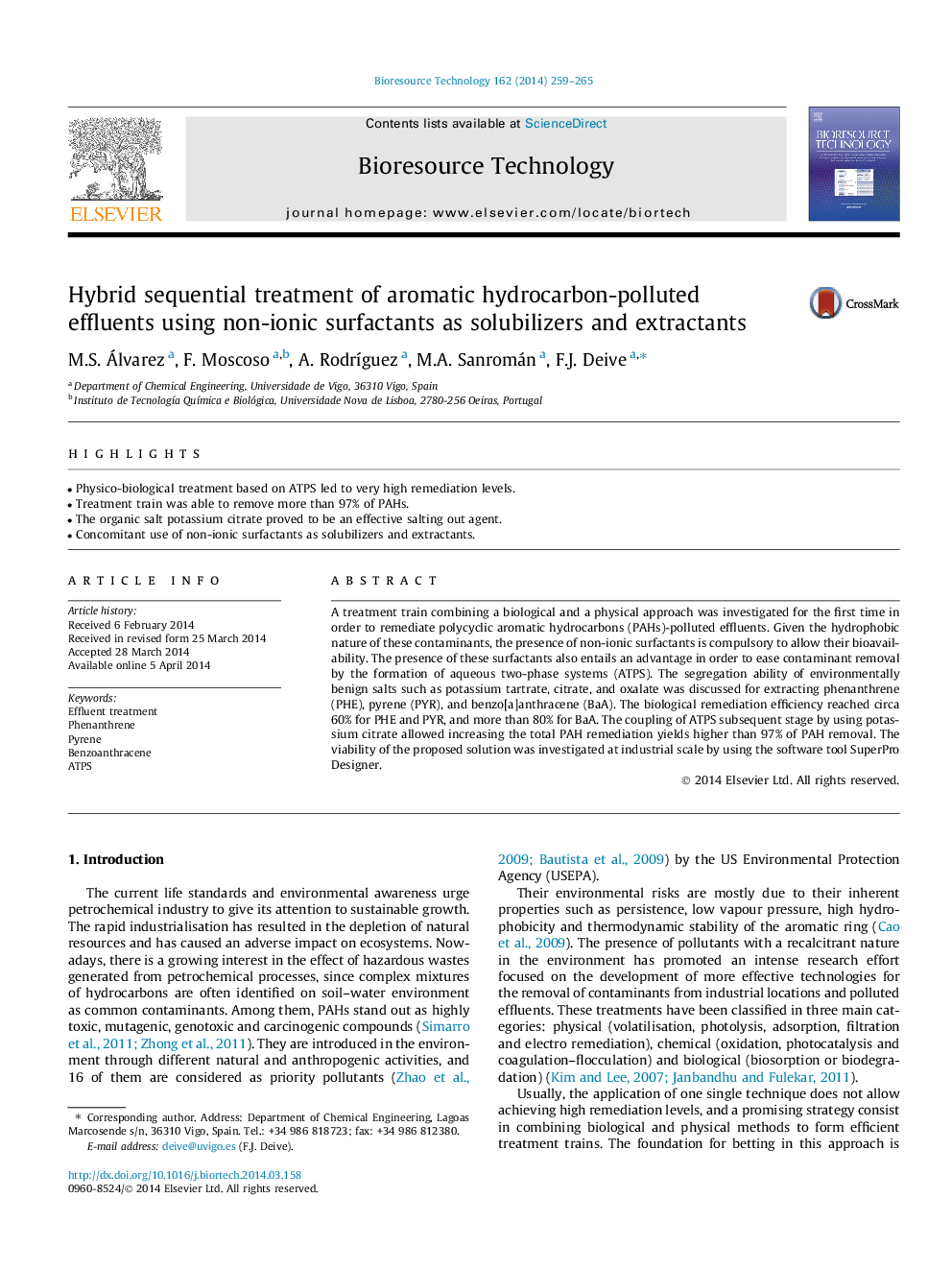| Article ID | Journal | Published Year | Pages | File Type |
|---|---|---|---|---|
| 7078031 | Bioresource Technology | 2014 | 7 Pages |
Abstract
A treatment train combining a biological and a physical approach was investigated for the first time in order to remediate polycyclic aromatic hydrocarbons (PAHs)-polluted effluents. Given the hydrophobic nature of these contaminants, the presence of non-ionic surfactants is compulsory to allow their bioavailability. The presence of these surfactants also entails an advantage in order to ease contaminant removal by the formation of aqueous two-phase systems (ATPS). The segregation ability of environmentally benign salts such as potassium tartrate, citrate, and oxalate was discussed for extracting phenanthrene (PHE), pyrene (PYR), and benzo[a]anthracene (BaA). The biological remediation efficiency reached circa 60% for PHE and PYR, and more than 80% for BaA. The coupling of ATPS subsequent stage by using potassium citrate allowed increasing the total PAH remediation yields higher than 97% of PAH removal. The viability of the proposed solution was investigated at industrial scale by using the software tool SuperPro Designer.
Related Topics
Physical Sciences and Engineering
Chemical Engineering
Process Chemistry and Technology
Authors
M.S. Álvarez, F. Moscoso, A. RodrÃguez, M.A. Sanromán, F.J. Deive,
